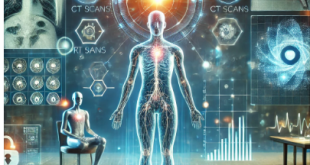The Synergy of AI and Scientists:
Redefining Innovation
In an era in which technology moves at breakneck speed, one of the most transformative forces in research and innovation is collaboration between Artificial Intelligence (AI) and scientists. AI and scientists are not competitors; they complement each other’s strengths to solve complex problems and open new frontiers of discovery.
AI and Scientists: A Match Made in Heaven
The scientific process involves hypothesizing, experimentation, and result analysis. The scientists offer creativity, domain knowledge, and their thoughts; AI gives speed, exactness, and unprecedented data-processing capacities. It looks like this:
1. Data Mastery
Modern science generates massive datasets—from genomic sequences to satellite imagery. Analyzing such data manually is time-consuming and error-prone. AI tools, like machine learning algorithms, are ideally suited to finding patterns, correlations, and insights hidden in these big datasets to produce leads scientists might pursue.
2. Improved Experimentation
Experimentation is revolutionized with AI-powered automation platforms, especially in fields like chemistry and biology, where robots can autonomously carry out experiments, optimize conditions, and analyze outcomes. This doesn’t only speed up research but also limits the chances of human error.
3. Hypothesis Generation
AI systems can now scan vast scientific libraries to indicate hypotheses. For instance, NLP can easily find some connections that human minds might miss. Scientists are thus presented with a different opportunity for further investigation.
4. Predictive Modeling
It ranges from climate forecasting to discovering drugs. AI has performed well in predictive modeling. For instance, AI can simulate complex systems and provide scientists with tests of different scenarios so that they can predict what would happen before creating real experiments.
Real-World Examples of Collaboration
Healthcare and Drug Discovery
AI systems like Deep Mind’s Alpha Fold have revolutionized protein structure prediction, a critical step in understanding diseases and designing drugs. Scientists use these insights to accelerate the development of life-saving medications.
Environmental Science
AI helps climate scientists model environmental changes, predict extreme weather events, and design sustainable solutions. For instance, AI-driven satellite analysis is being used to monitor deforestation and its impact on ecosystems.
Astronomy
AI is helping astronomers in processing terabytes of data collected by telescopes, identifying exoplanets, and even in detecting signals that may indicate extraterrestrial life.
The Human Touch: What AI Cannot Do Alone
While AI is a powerful tool, it cannot replace the human mind. Here‘s why the role of scientists remains irreplaceable:
1.Creativity and Intuition Science often involves “thinking outside the box.” Breakthroughs like the theory of relativity or the discovery of penicillin were driven by human intuition and creativity, qualities that AI lacks.
2.Ethical Oversight Scientific breakthroughs often involve some ethical considerations. AI cannot assess the morality of the implications of a research to use genetic engineering or AI itself in sensitive applications.
3.Interdisciplinary Insights Many scientific discoveries are interdisciplinary. Human beings have the ability to integrate different knowledge areas and produce new inventions.
Difficulties in the Collaboration
Incorporating AI into scientific research is not an easy task:
•Data Bias: AI models are only as good as the data that they are trained on. If the data is biased, then the results that it produces may be flawed or even discriminatory.
• Skill Gaps: Scientists need training in AI and data science to effectively leverage these tools, creating a demand for interdisciplinary expertise.
• Accountability: Determining responsibility for AI-driven decisions, especially in high-stakes research, remains a gray area.
A Vision for the Future
The collaboration between AI and scientists is not about replacement but augmentation. Together, they can:
• Solve pressing global challenges like climate change, pandemics, and food security.
• Accelerate innovation, bringing solutions to market faster than ever before.
• Democratize research by making advanced tools accessible to more scientists, including resource-limited settings.
To realize the full potential of this partnership, investments in education, ethical frameworks, and interdisciplinary collaboration will be needed.
Conclusion
This is a new paradigm of discovery and innovation through collaboration between AI and scientists. Together, we can address humanity‘s most pressing issues and unlock the possibilities that lie within every line in our imagination.
Thus, navigating this partnership will determine the future of science not by what AI can do but by how scientists choose to use it.


